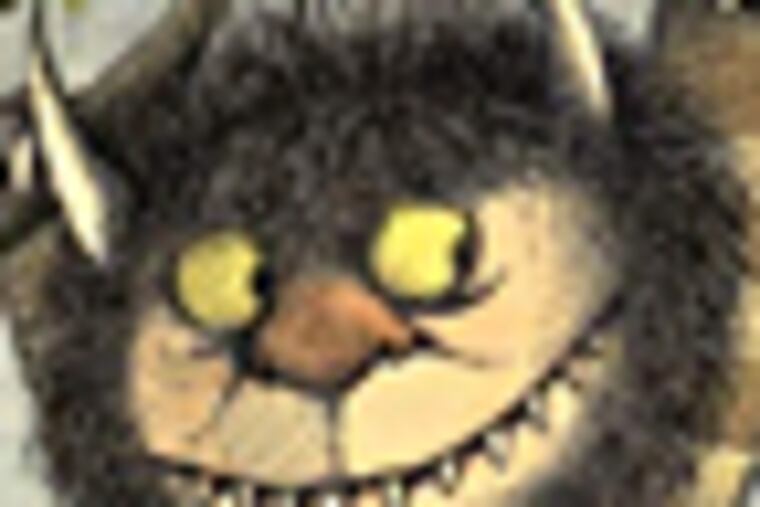Sendak’s lessons for children and their parents
I was moved to tears Tuesday when a colleague phoned to say that Maurice Sendak, the celebrated children’s book author and illustrator, had died. Sendak’s books have been an important presence in my life for almost as long as I can remember. My very first childhood book-related memory is of my brother’s copy of Sendak’s most famous book, Where the Wild Things Are, which won the Caldecott Medal in 1964. When my own children came into the world, this is a book I read to them over and over again, partly out of nostalgia but mostly out of a recognition that Sendak’s stories and pictures serve to validate the unique and complicated perspective that children have of the world around them.

I was moved to tears Tuesday when a colleague phoned to say that Maurice Sendak, the celebrated children's book author and illustrator, had died. Sendak's books have been an important presence in my life for almost as long as I can remember.
My very first childhood book-related memory is of my brother's copy of Sendak's most famous book, Where the Wild Things Are, which won the Caldecott Medal in 1964. When my own children came into the world, this is a book I read to them over and over again, partly out of nostalgia but mostly out of a recognition that Sendak's stories and pictures serve to validate the unique and complicated perspective that children have of the world around them.
Maurice Sendak had a profound impact on children's culture. Where the Wild Things Are was unafraid to confront the things that sometimes make adults uncomfortable, such as anger, frustration, fear, and loneliness.
In this story, a boy named Max gets too rambunctious and is sent to bed without his supper. Once in his room, Max sails on his private boat to the land of monsters who "roared their terrible roars and gnashed their terrible teeth and rolled their terrible eyes and showed their terrible claws." Max controls them by staring into their yellow eyes and saying, "Be still," whereupon he is crowned king of the wild things.
But Max becomes lonely as king and wants to be "where someone loved him best of all."
In this story and in others, Sendak did not sugarcoat childhood; he legitimized it by writing and illustrating its rich complexion of honesty, imagination, power, and vulnerability. Today's books for children reflect this sensibility, and books that receive special recognition with awards such as the Newbery (for excellence in American literature) or the Caldecott (for excellence in illustration) often deal with heavy subjects such as sexual awakening, racial tension, and death. Sendak's work, in large part, helped expand the terrain of acceptable content in American children's literature.
Though Where the Wild Things Are is Sendak's most popular book, it was In the Night Kitchen that established Sendak as a provocateur and drew sharp boundaries for this new terrain. In the Night Kitchen, published in 1970, was scandalous to adults (and banned by libraries) for its illustrations of the story's child protagonist, Mickey, who was drawn without clothes.
In interviews, Sendak claimed to be surprised by the intense public reaction to nudity in a children's book. Whether he was being disingenuous in such statements I cannot know, but this book provided fodder for a national discussion about the role of books in children's lives and what they reveal about adults' own fears. Indeed, the debates we have had in recent years over the appropriateness of book series such as Harry Potter or The Hunger Games reveals just how wide and deep adult fears run.
The continuing success of children's books (real books, not electronic screens) in a print-media economy that has suffered in recent years underscores just how valued tangible pictures and words are to children and the adults who share their stories. Parents per se were not Sendak's audience, but he must have recognized the impact his words and images would have as they read his books aloud to their children.
Sendak did not sentimentalize childhood, but his books did and, in an odd way, they offer guidance to parents. When asked in a recent interview by none other than Stephen Colbert, "What's the best thing a parent can do for a child?" Sendak replied in all seriousness, "Love him/her." When pressed by Colbert to define what that meant, Sendak said, "Take them for what they are."
That is what Maurice Sendak's oeuvre says to readers: Children are who they are and the best we can do is help them through the turbulent time we call childhood.
Perhaps the reason I kept returning to Where the Wild Things Are — first as a child and then as a parent — is that when Max is through conquering the wild things and is ready to come back to where he is loved best of all, that place is home, where his mother has supper waiting. And it is still hot.
E-mail Amy B. Jordan at ajordan@asc.upenn.edu.